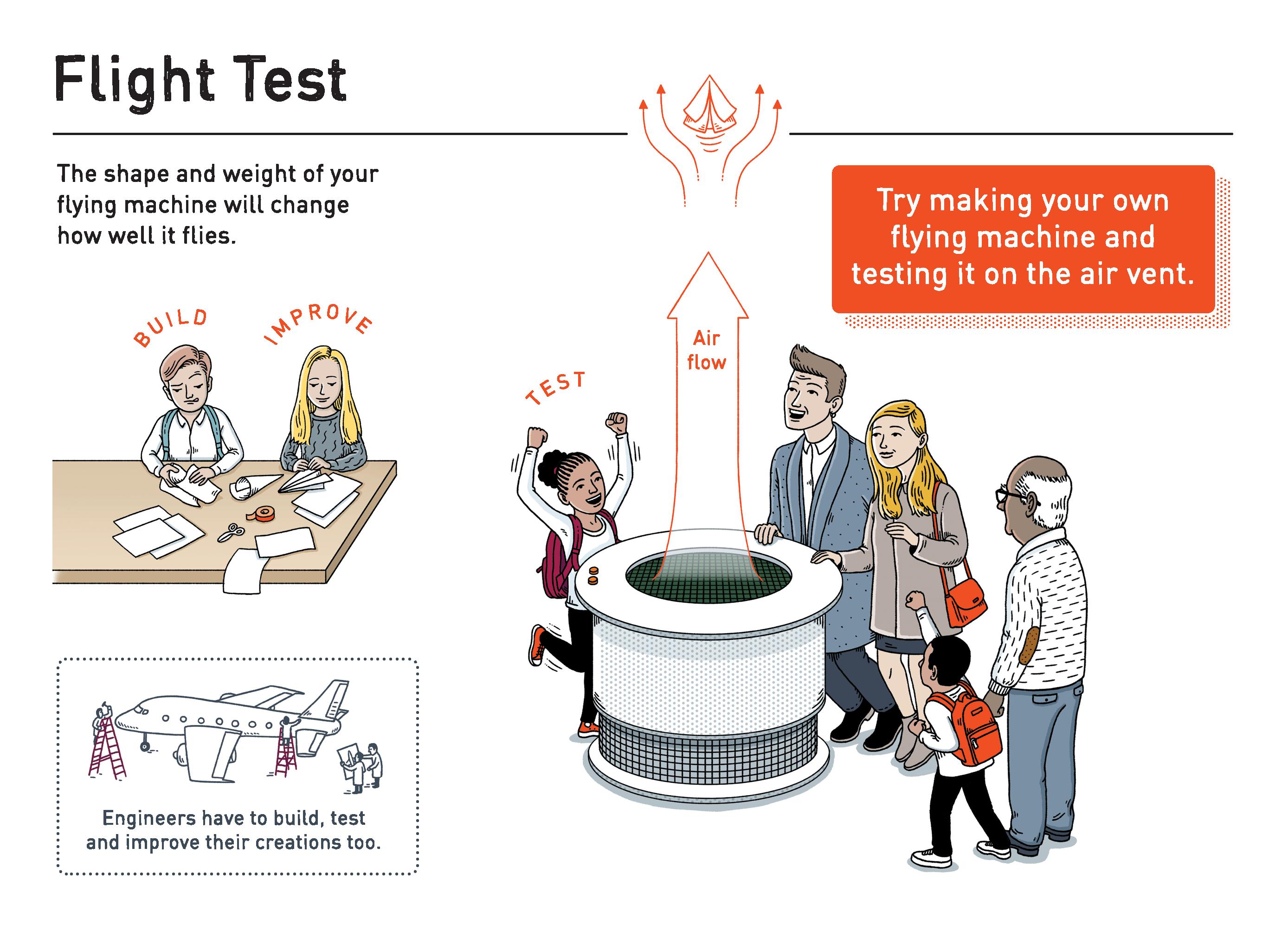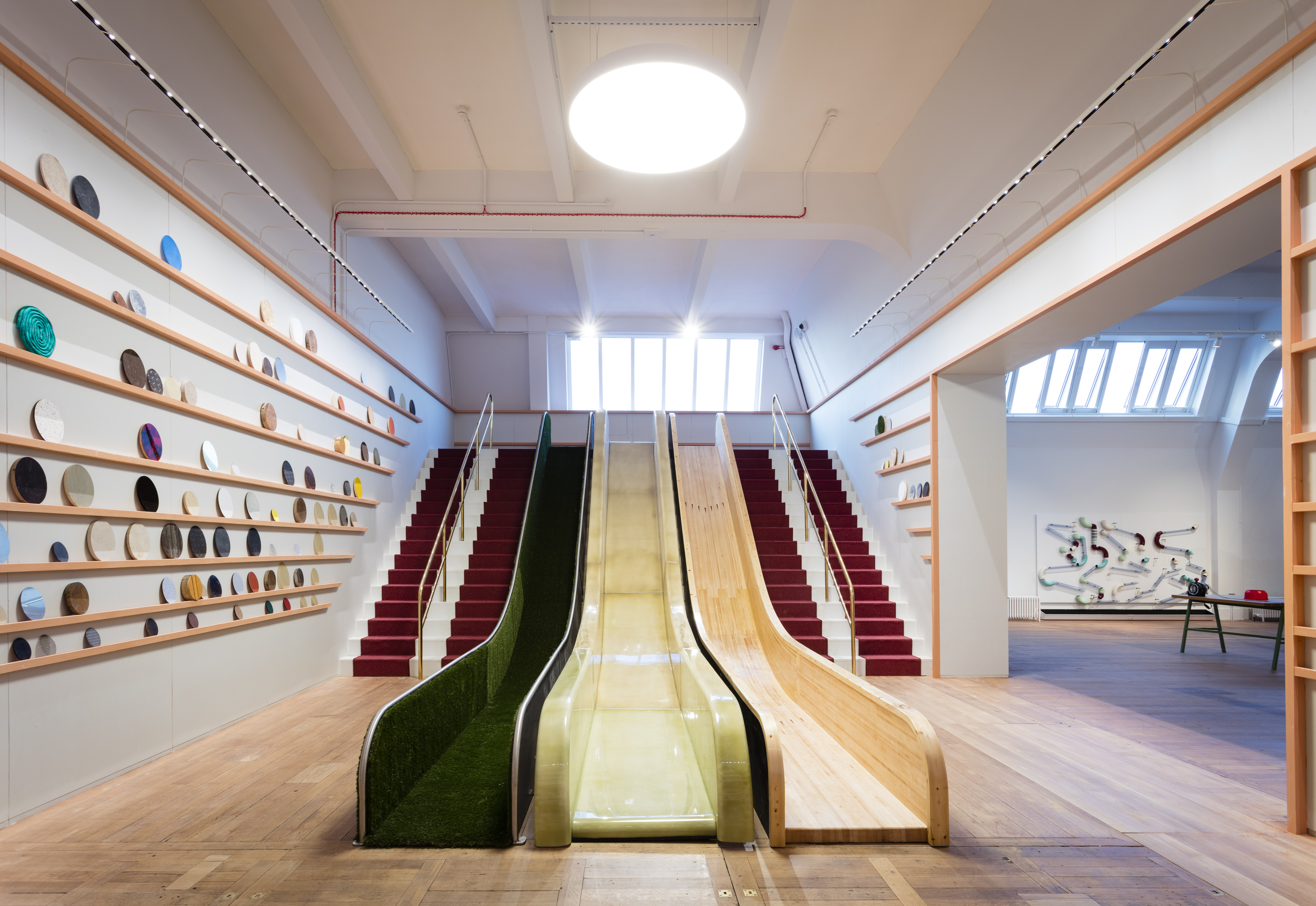They might think that it’s too hard, too boring or just irrelevant to their future careers and aspirations. They might think they are more of an arty person and that science doesn’t have any room for creativity, or that it’s more of a male subject.
A large part of what we do at the Science Museum Group is to try to ignite curiosity in science and help people see that science is for them. We want people of all ages to see how science affects our lives and that in engaging with it you can learn skills and gain knowledge that will help you whatever age you are or whatever job you do.
We created Wonderlab: The Equinor Gallery with that mission in mind. Wonderlab is a gallery for all ages that shows the wonder and beauty of science through 50 hands-on and immersive experiences. The gallery helps people use the skills that scientists need; skills like curiosity, close attention and creativity (the 3 C’s).
There is a slide with three lanes made of different materials so you can test which is the fastest. A huge rotating turntable you can walk on that models the solar system so you can see how we get day and night, seasons and eclipses. You can touch a cloud, see lightning strike or have your own chemistry experiment made at the chemistry bar.
In focusing not just on young people gaining scientific knowledge but also on them recognising science skills we hope they will gain an insight into the transferability of these skills. One way we have tried to achieve this is through using illustrations on our exhibit labels. These illustrations, by Andrew Rae (below) depict not only information about the exhibit but also a real life context. Where possible this includes a career.

An important aspect of the gallery was to engage visitors on an emotional level as well as physically and intellectually. We aimed to achieve this through large scale, bold and sometimes immersive experiences specifically with the aim to try and ‘wow’ our visitors. A million volt tesla coil that fires bolts of lightning, a huge friction slide (pictured below), a smoke haze filled room pierced by beams of light are all exhibits designed to help people make an emotional connection with a science experience.
